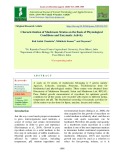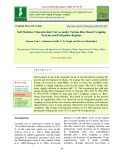
Optimum growth conditions
-
In this study, extreme halophilic archean Natrialba asiatica was utilized as a new source for lipase production. Lipases from halophilic archaea are appealing for utilization in assorted industrial and biotechnological applications. The optimum temperature and pH of N. asiatica lipase in the crude mixture were 50 °C and 10, respectively. The growth conditions influencing lipase production were determined using a two-level fractional factorial Plackett–Burman design. Among the 9 factors screened, MgCl2 concentration, temperature, and shaking were found to be effective.
 6p
6p  princessmononoke
princessmononoke
 30-11-2021
30-11-2021
 17
17
 1
1
 Download
Download
-
The optimum growth time was acquired to be 11 hours. Thereby such obtained electrode exhibited the maximum HER activity with onset over the potential of 220 mV versus reversible hydrogen electrode (RHE), and the Tafel slope of 66 mV per decade (mV/dec). Conclusion: Our results suggest a good technique for the research of high-efficient HER electrocatalyst based on atomicthickness layered materials.
 7p
7p  spiritedaway36
spiritedaway36
 28-11-2021
28-11-2021
 3
3
 1
1
 Download
Download
-
This study aimed to determine the optimum nitrogen application rate for quinoa in saline soils.
 9p
9p  chauchaungayxua12
chauchaungayxua12
 09-07-2021
09-07-2021
 9
9
 1
1
 Download
Download
-
Pomegranate is commercially propagated by cuttings. Use of optimum concentration of IBA, type of cutting and optimum rooting media would help in rapid multiplication of pomegranate cuttings. The success percent of pomegranate cuttings depends on many factors such as conditions of the mother plant, rainfall, time of operation, temperature fluctuation, aftercare etc.
 7p
7p  cothumenhmong9
cothumenhmong9
 04-01-2021
04-01-2021
 18
18
 2
2
 Download
Download
-
The most important factor for the success of plantation is readily availability of quality seeds. In favorable climatic conditions with optimum moisture and temperature most of the tree species germinate quickly and in unfavorable conditions some degree of seed dormancy occurs.
 16p
16p  trinhthamhodang9
trinhthamhodang9
 16-12-2020
16-12-2020
 11
11
 2
2
 Download
Download
-
A field experiment was conducted to evaluate optimum plant density and suitable G. hirsutum cotton genotype for high density planting system under rainfed condition. Plant growth parameters, seed cotton yield and economics of cotton genotypes under various high planting densities were studied during kharif, 2013-14 to 2015-16 on medium soil. Increase in plant density has reduced monopodial branches plant-1 whereas, number of bolls plant were increased with increase in density.
 8p
8p  trinhthamhodang1216
trinhthamhodang1216
 19-11-2020
19-11-2020
 16
16
 2
2
 Download
Download
-
Maximum yield is achieved at optimum plant density which depends upon environmental condition, cropping system and cultivar (Bridge et al., 1973; El-Shinnawy and Ghaly, 1985; Halemani and Hallikeri, 2002). However, farmers are adopting various plant geometries with wider row spacings as well as closer plant spacings. As Bt cotton cultivation has resulted in early setting of bolls, ultimately it requires more nutrients. The present study was carried out to know the effect of spacing and fertility levels growth and yield of Bt cotton.
 7p
7p  trinhthamhodang1216
trinhthamhodang1216
 19-11-2020
19-11-2020
 11
11
 2
2
 Download
Download
-
Effect of kind and concentration of culture media, and plant growth regulators on in vitro response was studied in an economically important seaweed species viz. Gracilaria corticata var. cylindrica. Filter sterilized autoclaved artificial seawater medium at 100 % concentration (A2) was found to be the most optimum for in vitro culture as the cultured explants showed superiority in terms of growth and photosynthetic pigment content, apart from inducing lateral bud formation.
 11p
11p  caygaocaolon8
caygaocaolon8
 07-11-2020
07-11-2020
 8
8
 1
1
 Download
Download
-
Bacterial canker of tomato caused by Clavibacter michiganensis subsp. michiganensis (Cmm) causes significant yield losses on tomatoes. It is newly observed bacterial disease in mid hills of Himachal Pradesh, India. Few or less work has, therefore, been done on this disease in the state. This study was conducted to find optimum growth conditions for the bacterium. Under present investigations, five isolates of Cmm were thus isolated and maintained in pure cultures.
 7p
7p  angicungduoc8
angicungduoc8
 07-11-2020
07-11-2020
 16
16
 1
1
 Download
Download
-
Downy mildew of onion is one of the major threats to onion cultivation, especially in subtropical and dry temperate zone, caused by an oomycetes Peronospora destructor (Berk.) Casp. ex Berk. A study was undertaken to investigate into the epidemiological factors that affects the initiation and dispersal of disease. Under in vitro conditions suitability of different temperature and relative humidity regimes, on germination and relative growth of germ tube has been studied.
 12p
12p  caygaocaolon6
caygaocaolon6
 30-07-2020
30-07-2020
 10
10
 1
1
 Download
Download
-
The present study was undertaken at Agriculture Research Station, Anakkayam from February- April, 2019 with objectives to study the influence of various environmental conditions on growth of brinjal (Solanum melongena) under protected and open cultivation and to analyze the impact of variations in temperature, humidity and soil moisture on plant biometric characters. The abiotic factors like temperature, humidity and soil moisture showed significant variation under different growing conditions (open field and polyhouse). Mean daily temperature (36.
 7p
7p  angicungduoc6
angicungduoc6
 22-07-2020
22-07-2020
 16
16
 1
1
 Download
Download
-
Sclerotinia sclerotiorum is a temperate plant pathogen. It is soil borne and has a worldwide distribution. It affects cabbage leading to a diseased condition called head rot in which rotting of fully grown cabbage heads takes place. The rotted cabbage heads exhibit cottony white mycelial growth on their surface. With advancement of the disease the mycelial growth becomes dense and numerous carbon black coloured bodies called sclerotia are formed on the surface.
 5p
5p  nguaconbaynhay6
nguaconbaynhay6
 24-06-2020
24-06-2020
 23
23
 1
1
 Download
Download
-
Seeds of Gmelina arborea many times do not germinate due to unknown reason. So the study was initiated to determine optimum stage of fruit maturity (green, yellow and yellow brown), suitable growing environment (agro-net shade and open field condition) and sowing time (August, September, October, November, December and January) on germination and seedling growth. Significant differences were exhibited among the fruit maturity levels, growing environment and sowing time for all the traits.
 10p
10p  quenchua6
quenchua6
 15-06-2020
15-06-2020
 17
17
 1
1
 Download
Download
-
Thielaviopsis paradoxa is an ascomyceteous fast growing fungus has broad host range under tropical condition. The growth dynamics and sporulation of this pathogen have been investigated in relation to various media, physical factors like temperature and pH with significant variation among the treatments. All 12 media supported growth although with a change in their dynamics. Maximum radial growth were recorded on PDA, PSA, MEA and OMA media and the optimum temperature for growth was 30oC although the cardinal temperatures were 10oC and 40oC.
 8p
8p  nguaconbaynhay5
nguaconbaynhay5
 16-05-2020
16-05-2020
 9
9
 0
0
 Download
Download
-
Results of the experiment revealed that, higher growth parameters and yield were observed in direct seeding by drum seeder over direct seeding by broadcasting and the least were observed in conventional transplanting under late sown conditions. Application of 100 % recommended nitrogen i.e., (120 kg ha-1 ) for both varieties (RNR-15048 and JGL-18047) was found to be optimum even under late sown conditions.
 12p
12p  chauchaungayxua5
chauchaungayxua5
 08-05-2020
08-05-2020
 9
9
 1
1
 Download
Download
-
Cotton (Gossypium hirsutum L.) is the most important fibre crop of the world with significant role in Indian agriculture, industrial development, employment generation and contribution to the national income. It is mainly grown for textile fibre, feed, fuel and edible oil. Despite a firm competition from synthetic fibres, cotton continues to enjoy a place of prime importance in the textile industry.
 12p
12p  nguathienthan4
nguathienthan4
 21-04-2020
21-04-2020
 16
16
 0
0
 Download
Download
-
The white button mushroom (Agaricus bisporus) is very popular throughout the world and is the most important mushroom of commercial significance in India. It can be successfully cultivated in places where the environmental conditions are favorable but it is cultivated in North India in winter seasons due to the favorable conditions. The optimum temperature for mycelial growth is 20°C -25°C and that for fruit body formation 15°C - 20°C and a high percentage of relative humidity (80-85%).
 6p
6p  quenchua4
quenchua4
 16-04-2020
16-04-2020
 14
14
 1
1
 Download
Download
-
Characterization of mushroom strains on the basis of physiological conditions and enzymatic activity
A study on 18 strains of mushrooms belonging to 5 genera namely Agaricus, Calocybe, Lentinula, Pleurotus, Tricholomawas done for biochemical and physiological studies. These strains were obtained from Directorate of Mushroom Research, Solan and Mushroom Lab, RPCAU, Pusa. Radial growth measurement of mycelium for optimum growth conditions for all the strains were recorded with respect to different media, temperature and pH. The biochemical screening of enzymatic activities for all the strains was also done for lipase, amylase, laccase and oxidase.
 8p
8p  caygaocaolon4
caygaocaolon4
 04-04-2020
04-04-2020
 10
10
 1
1
 Download
Download
-
Soil moisture is one of the important factor of soil that directly regulate the growth and development of plants. To manage the water scarcity problem during rabi season in south Bihar, we have to know the available water condition to supply optimum water for the crops. The soil is sandy clay loam, slightly alkaline in reaction (pH 7.3). The experiment has split plot design having three fertigation levels of nitrogen (W1=25% N, W2=50% N, W3=75%N of RDF) in main plot and 4 cropping systems i.e. Ricewheat, Rice-barley, Rice-chickpea, Rice-lentil in sub plot.
 6p
6p  caygaocaolon4
caygaocaolon4
 04-04-2020
04-04-2020
 14
14
 1
1
 Download
Download
-
Prolonging the post-harvest life is essential to assure more life of flowers. For prolonging vase life, we should study about the pre-harvest, harvest and postharvest factors of flower crops that ultimately affects the flower life. There are a series of steps involved to prepare flowers for market after harvesting known as post-harvest handling. These steps include: Harvesting, Conditioning, Pre-cooling, Pulsing, Grading, Bunching, Wrapping, Packaging, Storage, Transport and Sale.
 10p
10p  trinhthamhodang4
trinhthamhodang4
 22-03-2020
22-03-2020
 11
11
 1
1
 Download
Download
CHỦ ĐỀ BẠN MUỐN TÌM









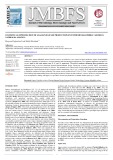
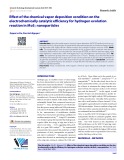

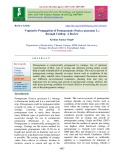
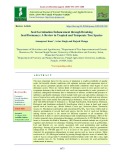
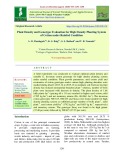
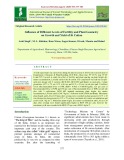
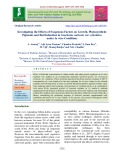
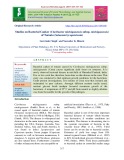
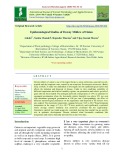
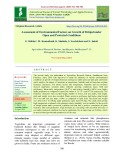
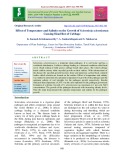
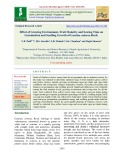
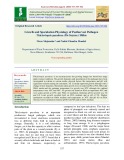
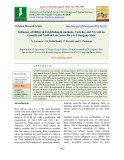
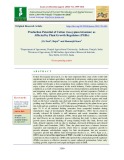
![Comparative study of the nutritional content of white button mushroom [Agaricus bisporus (Lange) Imbach] after application of pseudomonas putida Comparative study of the nutritional content of white button mushroom [Agaricus bisporus (Lange) Imbach] after application of pseudomonas putida](https://tailieu.vn/image/document/thumbnail/2020/20200416/quenchua4/135x160/2471587051792.jpg)
